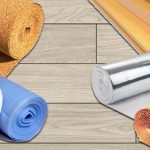Content
- 1 Causes of discoloration
- 2 What to do
- 3 Types of septic tanks for wood
Wood is a popular material for construction, but special problems coexist with it. Sometimes boards and bars turn blue or black. Why is this happening and what can be done?

Causes of discoloration
It is worth noting that live wood, which is not dead wood, is prone to color changes. In professional circles, she is referred to as the "green forest." Why is such lumber prone to blueing:
- Blueing is characteristic of conifers. Lumber will necessarily change color in the summer-autumn period during high temperatures;
- Any live and wet lumber enters into a series of reactions with the environment, the interaction occurs along the cut line. It is influenced by many factors: precipitation, temperature changes, humidity change;
- The lumber is covered with a blue-green film, and then begins to blacken, if the chips rot on the cut from high humidity, and after that the process goes to all the wood;
- If lumber is stacked in large stacks, where there are no ventilated areas between boards and boards, then the upper and lower rows usually begin to turn blue.

Usually blue and black plaque on wood is the result of the activity of a wood-coloring fungus. If you do not do woodworking in time, then another, more terrible, fungus will start in it, which causes lumber to decay and decay.

What to do
Any construction lumber has a biological origin, so it is subject to color change in any case. It is necessary to treat this process as inevitability. Moreover, it is easy and quick to process wood that has not had time to change color in depth by 2-3 mm.

Lightening of wood takes place in two stages. First, bleach-reducing agent is used, and after impregnation, an antiseptic.
Types of septic tanks for wood
The main antiseptics that protect lumber from mold: sodium fluoride, sodium silicofluoride, ammonium silicofluoride, preparations VVK-3, CXP and MHHTS. Water-based solutions are applied using a brush or a spray gun powered by a compressor. The latter method is especially in demand with a large processing area.

For bleaching, you can also use special solutions: Sagus and White Drevosept. Such solutions impregnate the wood 2-5 cm deep and kill all microorganisms harmful to the material.


-
 Textured wallpaper in the interior
Textured wallpaper in the interior
-
 How to choose acrylic paint for walls
How to choose acrylic paint for walls
-
 Why do people love the lawns in their private house
Why do people love the lawns in their private house
-
 Warm seam - we warm a wooden house
Warm seam - we warm a wooden house
-
 The use of natural stone in construction
The use of natural stone in construction
-
 What materials can be used to decorate the ceiling in a children's room?
What materials can be used to decorate the ceiling in a children's room?
-
 Border ribbon for wallpaper
Border ribbon for wallpaper
-
 Pipes that may burst due to frost
Pipes that may burst due to frost
-
 How to choose the right carpet for your home
How to choose the right carpet for your home
-
 Gypsum 3D panels for walls: advantages and disadvantages
Gypsum 3D panels for walls: advantages and disadvantages
-
 What is the optimal thickness of the substrate for the laminate
What is the optimal thickness of the substrate for the laminate
-
 Than latex foam is better than other construction foam
Than latex foam is better than other construction foam
New publications are published daily on our channel in Yandex. Zen
Go to Yandex. Zen


